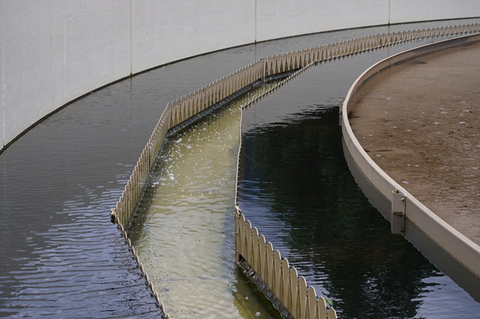Wastewater treatment for newbuilds what to consider...

Where properties are not connected to a main sewage network there are a number of systems that can be installed to treat waste water. The principle of all of these systems is that they will partially process sewage and waste water and improving the quality before it is evacuated or discharged.

The most common forms of waste water treatment when not connected to the sewer networks are:
- a septic tank – this is an underground tank where the solids sink to the bottom and the liquid flows out and soaks through the ground
- a small sewage treatment plant (also known as a package treatment plant) – this is a part-mechanical system that treats the liquid so it’s clean enough to go into a river or stream
- a cesspool (also called a cesspit) - a sealed tank that collects the sewage
- a non-standard system, this could be a reed bed or a trench arch system
The main UK sewage networks service up to 96% of the population with the other 4% utilising one of the systems above. These are generally remote properties or rural communities that have proven inaccessible to the main network.
By law both septic tanks and small treatment plants are required discharge to an infiltration system as part of the design; this is usually either a soakaway or secondary drainage field. Whilst a treatment plant will often provide a better level of treatment than a septic tank, if used and installed correctly septic tanks can be very effective. A badly maintained or incorrectly installed system has the potential to pollute local water sources and the surrounding environment through untreated discharge. Building control and the Environment Agency (SEPA) will advise on suitable discharge standards.
The cost of constructing or installing a septic tank is relatively low in comparison to other waste water treatment processes so they are an ideal choice for a single property. On-going maintenance is required and consists of routine inspection to ensure that the tank remains watertight; also any pipework should be checked for blockages when possible. It is also good practice to empty the tank every two – five years.

A septic tank will have at least two chambers which in previous years have generally been made out of brick work or cast concrete; these days reinforced plastic versions are widely available and are much less prone to leakage or deterioration.
A recent innovation to the market is the One2clean treatment system. This system allows aerobic digestion of the sludge by means of pumping air into the effluent. Aerobic biological digestion occurs, aeration is interrupted to allow the clean effluent to be decanted and discharged. Such a system provides a significantly higher quality of effluent. One which the Environment Agency (SEPA in Scotland) view favourably.
- Amitt 800
Comments 0